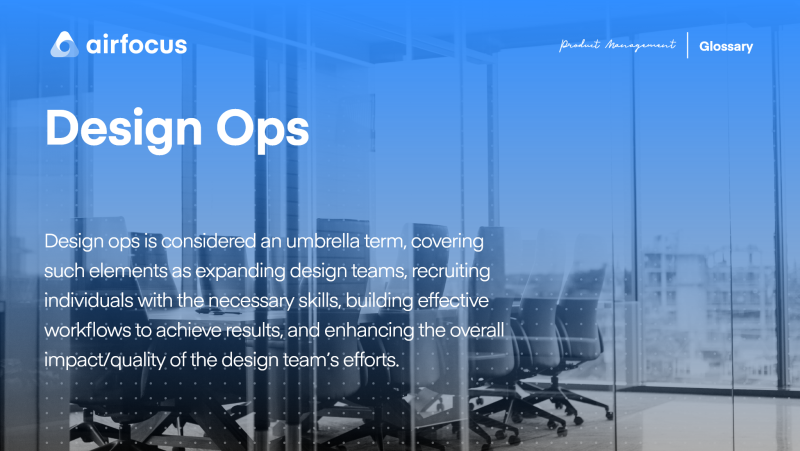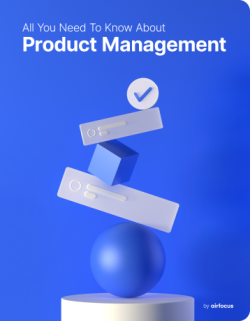Design Ops
What is design ops?
Definition of design ops
Design ops is considered an umbrella term, covering such elements as expanding design teams, recruiting individuals with the necessary skills, building effective workflows to achieve results, and enhancing the overall impact/quality of the design team’s efforts.
Those responsible for design ops may work individually or as a team, but their goal is to keep the design department operating at a high level with smooth, efficient processes.
Design ops encompass collaboration, too, as it’s vital that the design team interacts with other key departments (engineering, product, etc.) for the duration of a development process. Design ops facilitate this, ensuring the tools and structures are in place to support collaboration and communication.
Design ops should be maintained as businesses scale, particularly as new layers of management, product types, and bigger teams are implemented. Staying on track and minimizing disruptions can become more difficult as companies grow, but a clear design ops program reduces that risk.
The term design ops has become increasingly common in the past few years, though the roles and work involved significantly predate this. So what’s behind this sudden uptake of design ops? For one: design teams today tend to live in a state of flux.
For example, team members may not all be working at the same site while undertaking a project — some might be based in the office, others at home, and even others around the world. With work environments becoming more complex, and design ops is responsible for keeping work flowing both smoothly and efficiently.
What are the key benefits of design ops?
Design ops offer a number of benefits to businesses, including:
Design ops help to easily align schedules, ensuring that all teams stay focused and on-track
Managers can rely on design ops to keep different teams connected and working towards their shared or respective goals. Trying to monitor various departments and chart their progress becomes harder as companies expand and employees work remotely. There are so many wheels in motion, so many projects, and so much margin for error due to oversights.
But design ops helps product managers ensure teams’ schedules remain coordinated, enabling them to bring products to the necessary development stages efficiently. Essentially, there’s far less risk of one team bringing its part of the product to the finish line, and needing to wait days or weeks for the other side to catch up.
This means fewer delays, fewer missed targets, and — ultimately — happier customers.
In terms of teamwork, design ops make it easier to fully utilize resources and to assign team members more effectively
Another benefit of bringing design ops to your company is the ability to make better use of available resources. Product managers can allocate tools, employees, time, working space, and more to serve a team’s requirements to the highest standard.
This is fundamental to prevent design teams from becoming understaffed and under-equipped. Both issues can place tremendous strain on employees, especially those working on complex tasks with tight deadlines looming.
Planning ahead, using accurate information, increases the likelihood of project success and a quality product reaching fruition.
Design ops both exposes and eliminates weaknesses in current processes
Those responsible for design ops will assess current processes and identify any weaknesses that disrupt efficiency. These may be glaring gaps that employees have complained about for years or more minor problems that go largely unnoticed (yet still make a significant impact on results).
Evaluating, streamlining, and refining processes consistently creates a more effective, efficient flow. And, over time, design ops can transform the way in which a design team operates and can help individuals unlock their full potential.
The key parts of design ops
Those responsible for design ops in an organization take on numerous responsibilities. These include:
Infrastructure
Key for identifying, determining, and facilitating what the design team relies on to work at its best.
Workflow
The way in which the design team’s work is structured unfolds and relates to the wider business.
Tools
Ensuring the design team has access to the software, hardware, space, etc. to work.
Training/coaching
Recognizing which skills/knowledge gaps are (or could be) interfering with the design team’s performance; organizing training/coaching to fill said gaps can empower employees to reach new heights.
Financing/budgets
The cost of running the design team, supplying the equipment it needs, delivering training, etc., usually for the duration of the project at hand.
Retention
Identifying what steps are needed to encourage employees to remain with the company, and cultivating those changes required to build a more engaging, satisfying work environment/process.
Each of these is vital for businesses of any size, yet more work may be required to keep each of these aspects in check as a company scales. Extra projects and/or products means more work, possibly with tighter deadlines to accommodate growing demand. Design teams must remain organized, supported, and valued as increasing demands are placed upon them.
Good design ops mean the team’s work should be easier, more organized, and more streamlined than ever.
When do you need to invest in design ops?
Certain signs will tell you whether you need to implement design ops into your company’s processes to achieve success.
One is a lack of coordination and interaction between team members. Everyone in the design team should be on the same page, in terms of deadlines, tasks completed, tasks open, product specifications/requirements, and more.
Otherwise, a lack of harmony can lead to costly mistakes and delays in bringing products to the market.
Another sign is a lack of engagement in your design teams, perhaps with generally-low morale.
Employees should be motivated and encouraged to bring their best to the table with each product. A strong emphasis on design ops can rectify this, and leave team members excited by their work again — or even for the first time!

General FAQ

Glossary categories
Experience the new way of doing product management

Experience the new way of doing product management








